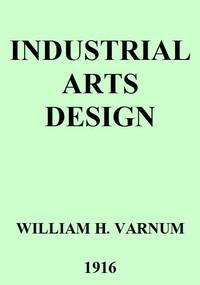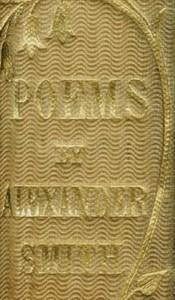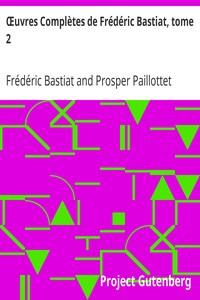|
|
Read this ebook for free! No credit card needed, absolutely nothing to pay.Words: 56980 in 39 pages
This is an ebook sharing website. You can read the uploaded ebooks for free here. No credit cards needed, nothing to pay. If you want to own a digital copy of the ebook, or want to read offline with your favorite ebook-reader, then you can choose to buy and download the ebook.

: Industrial Arts Design A Textbook of Practical Methods for Students Teachers and Craftsmen by Varnum William H William Harrison - Decoration and ornament; Industrial arts@FreeBooksWed 07 Jun, 2023 urniture and come within the possible developments of this division. Plate 3 illustrates the last division of evolution and concerns itself with the application of design to the surface of the otherwise complete structure. This division is commonly called applied surface design or decorative design. It is readily seen that this division should be considered after the structure has been carefully planned. To separate this division from the period of structural or contour enrichment we will call it Surface Enrichment. It may be seen from the foregoing discussion that a design may be carried through the following steps: Blocking in the enclosing lines of the design, as at Figure B, Plate 2, adding to this whatever may be needed for structural purposes, keeping the lines as nearly vertical and horizontal as possible; Enriching and varying the outline or contour. It is well for elementary wood workers to use this step with extreme caution, while less reserve is necessary in clay and metal; After careful consideration in determining the need of additional decoration, the last step, surface enrichment, should be used. The following chapters will take up these steps in the order stated above. The ideal method of developing the principles set forth in this chapter includes correlated activity in the shop by working out the project in the required material. As the technic of the individual improves, the larger range of design principles will be found to accompany and parallel his increasing skill. REVIEW QUESTIONS THE PRIMARY MASS AND ITS PROPORTIONS Upon first observing a building, one seldom notices details of structure. He sees the large mass as it is silhouetted against the sky. Nearer approach discloses mouldings, cornices, and doorways; while careful analytical study shows the technical points of construction. The architect, in his original planning, thinks in terms of masses, widths, and heights, disregarding at first the details and color. As architecture stands for parent design principles and represents some of the world's best examples of composition and design, industrial design should be based upon the best examples of architectural design. To a certain degree, also, the methods of the industrial arts designer should be those of the architect. It is necessary to think at first of our problem as a single mass or solid, bounded by enclosing dimensions of width, height, and thickness. Details like a mirror, handles, brackets, or knobs may project outside of this mass, but for the time being, they may be disregarded. Figure B, Plate 2, shows this manner of thinking, and will enable us to regard the problem as a big, simple mass so that the entire object, unobstructed by small details, may be seen. Figures 1 and 4, Plate 4, are examples of horizontal masses with the dark lines indicating the dominance of the horizontal lines and planes. The shelter house contains a long bench, making necessary the long horizontal lines of the building. The calendar holder has to be a horizontal mass because of the restrictions imposed by the shape of the calendar pad. Figures 2 and 3 are vertical masses. The vase is intended for tall flowers, while the chair, as has already been mentioned, must meet the needs of a single person. Utility and service then have been found to give the primary mass a given direction or dominance. The designer now represents this mass by drawing a rectangle similar to the block outline of Figure B, Plate 2. It is now necessary to see if the foundation stones of this rectangle have been laid correctly; in other words, to test the proportions of the primary vertical or horizontal mass. Certain other ratios are weak and indeterminate, showing a lack of clear thinking. They are like people with no definite or cleancut ideas upon a subject they discuss. Examples in this class show ratios of two to two and one-eighth, or three to three and one-fourth, neither positively square nor frankly rectangular. They hide around the corner, as it were, waiting to be anything. Figure 5, Plate 5, is an example of unsatisfactory proportionate ratios of the primary mass. The blotting tablet is nearly square, while the candlestick and sconce, which should have been designed with strongly vertical masses, lack the type of definite thinking that results in a decided vertical dimension. Free books android app tbrJar TBR JAR Read Free books online gutenberg More posts by @FreeBooks
: Œuvres Complètes de Frédéric Bastiat tome 2 mises en ordre revues et annotées d'après les manuscrits de l'auteur by Bastiat Fr D Ric Paillottet Prosper Editor - Economics FR Sciences et Techniques; FR Politique@FreeBooksWed 07 Jun, 2023
|
Terms of Use Stock Market News! © gutenberg.org.in2025 All Rights reserved.






